【ティムズ・コーナー9】山菜
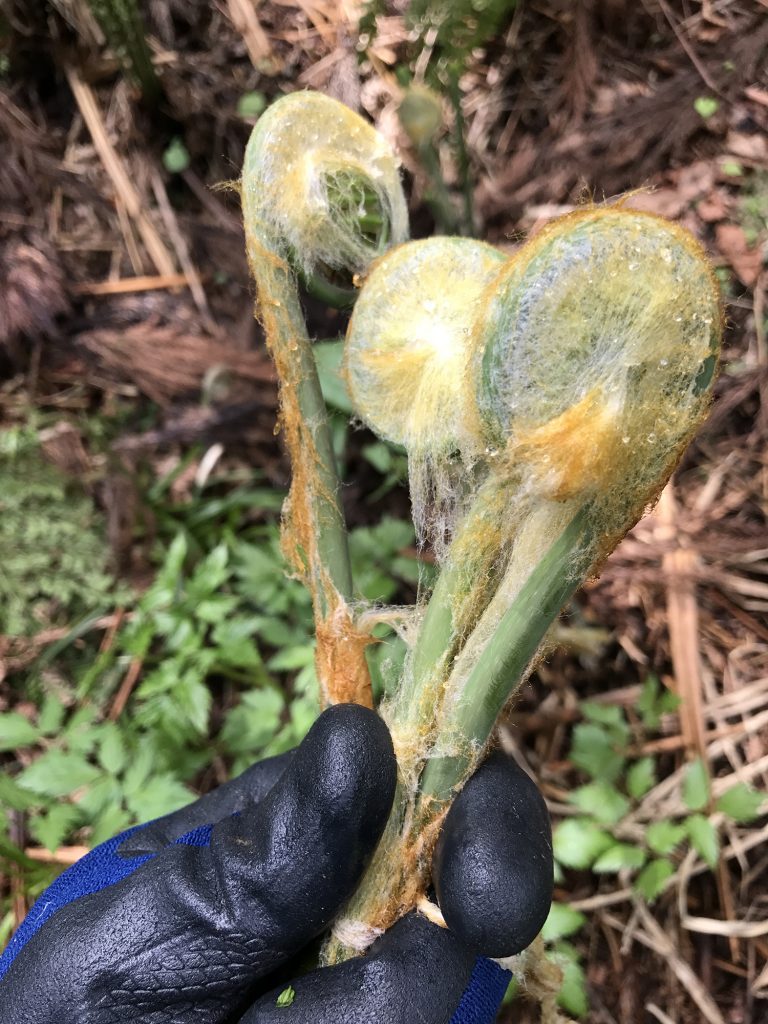
昨年、新潟に来てから、山菜をたくさん食べるようになりました。
山菜とは単純に「山の野菜」のことです。
山菜は、ここでは主要な食べ物で、山の中をかき分けて、探し回って、山菜を採ります。
雪に深く埋もれたこの山間の地域では、山菜は採った後すぐ食べることもありますが、保存食として一年を通して楽しむこともあります。
山菜は「苦味」があることで有名です。
動物は、この苦さ故に山菜を食べません。
この自然の苦さは、山菜の自衛のメカニズムなのです。
地元の人たちは、山菜の苦味を活かして、さまざまな方法で料理します。
よく作られるものは、さっと揚げた山菜天ぷら、アク抜きをした山菜のおひたし、また漬物としても保存されます。
味は本当に苦いのですが、私は山菜が大好きになりました。
地元の山菜名人に 「山菜採りに行こう!」 と誘われた時はとても驚きました。
山菜名人が、私が山菜が大好きだと知って、自分だけの秘密のスポットに山菜採りに連れて行ってくれました。
最初の話では長靴と手袋だけ準備すればいいと聞いていたのですが、どんどん山の奥深く車で入っていくではないですか…。
そして、「今日採る山菜は一種類 『ぜんまい』 だけだよ!」 と山菜名人に言われました。
その 「ぜんまい」 という植物は聞いたこともなく、はたしてこの山の中でどれが 「ぜんまい」 なのか見分けることができるのか?と不安になりました。
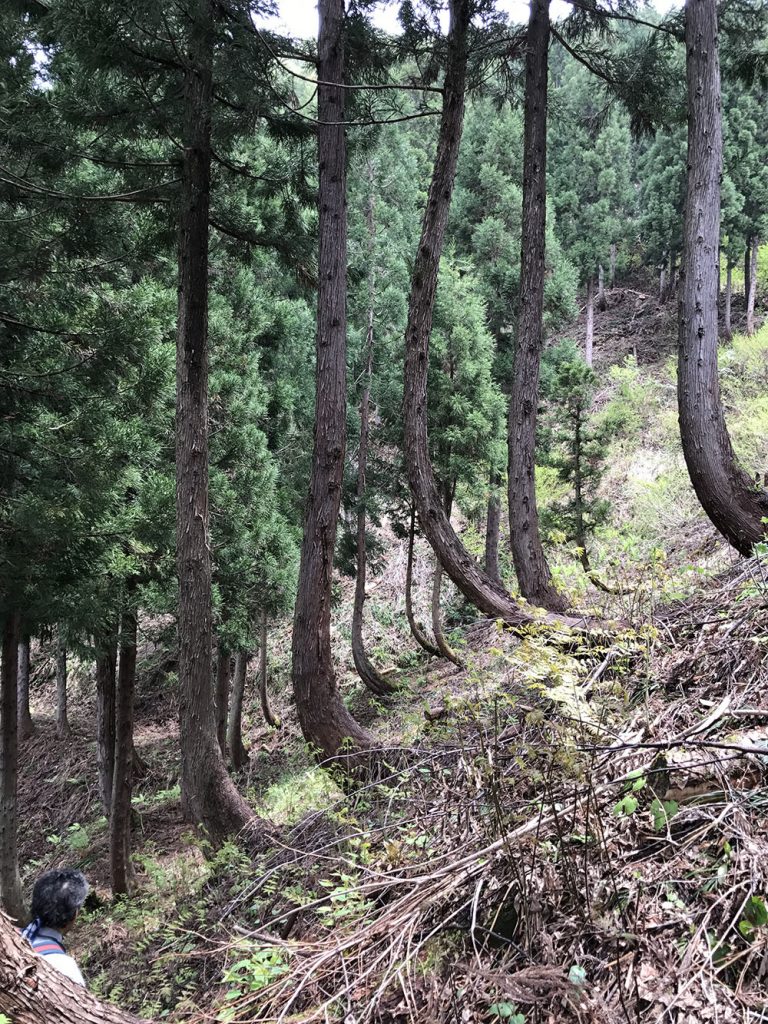
The Mountain is getting steep!
山に登り始めて3分後、最初の 「ぜんまい」 を見つけました。
「ぜんまい」 とは、湿気と日陰を好む野生のシダ植物で、先端は苔でできた蜘蛛の巣のようなものに覆われた非常に大きい渦巻状のシダ植物だということがすぐわかりました。
見た目は全く食欲をそそられませんでしたが、絶対おいしいのだろうなぁ!と思いました。
大きなポケットが付いたエプロンとバックパックを装備して、山の中へ入っていきました。
山を登りながら山菜名人は、遠くからでも上手にぜんまいを見分けることができます。
ぜんまいの下約3分の1を残し、茎をポキっと折り、ポケットへ入れていきます。
採ってはいけないぜんまいについても教えてもらいました。
ぜんまいがまだ小さすぎる場合は、採らずに来年まで大きくなるのを待ちます。
先端が渦巻状になったぜんまいだけが、食用に適しているということ、また、渦巻状の先端が開いてしまったり、シダの葉が広がってしまったぜんまいはそのまま残して置かなければならないことも教えてもらいました。
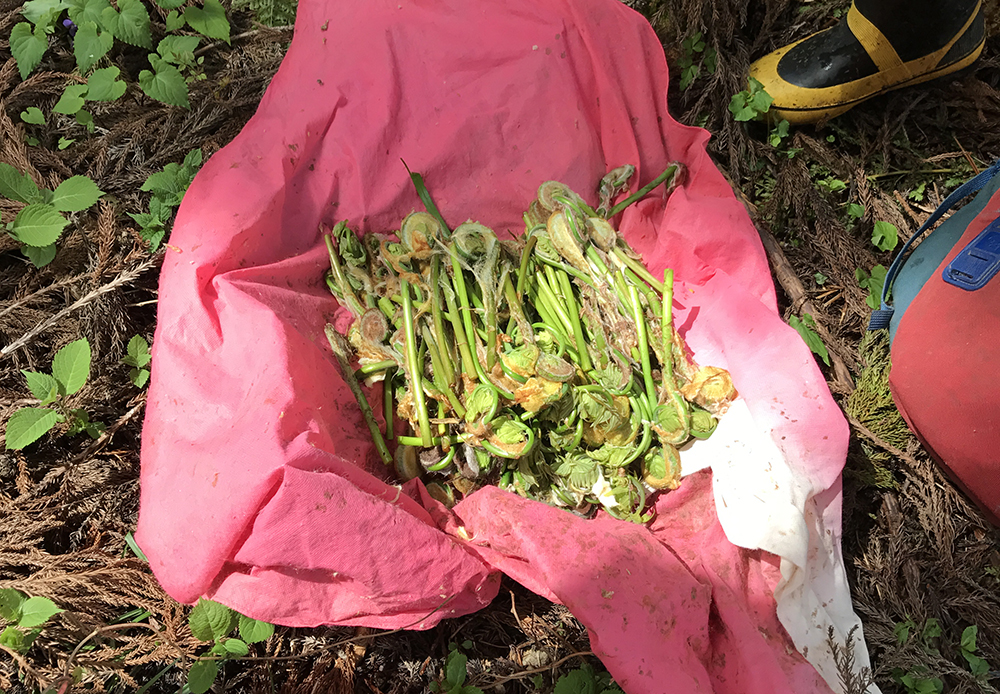
After about 20 minutes or so we stopped and wrapped up our Zenmai haul to put in our backpacks.
上へ上へと歩みを進めていくと、山の傾斜はどんどん険しくなっていきました。
エプロンのポケットがぜんまいでいっぱいになると、ぜんまいを布でくるみ、バックパックに入れました。
この山菜探しは楽しいゲームになり、山腹でぜんまいをだんだんと簡単に見分けることができるようになりました。
90分かけて登った後、私たちは山を降りることにしました。私のバックパックは、ぜんまいでいっぱいになりました。
山菜名人は、簡単に山菜を見つけられるように普段から山頂まで登っているそうです。
私はこの初心者コースでもこんなに疲れたというのに…。
3時間かけて登って、また3時間かけて下山することを普段からしているとは!
また、山に登らなければならない時は、何らかのトレーニングが私には必要だと思います。
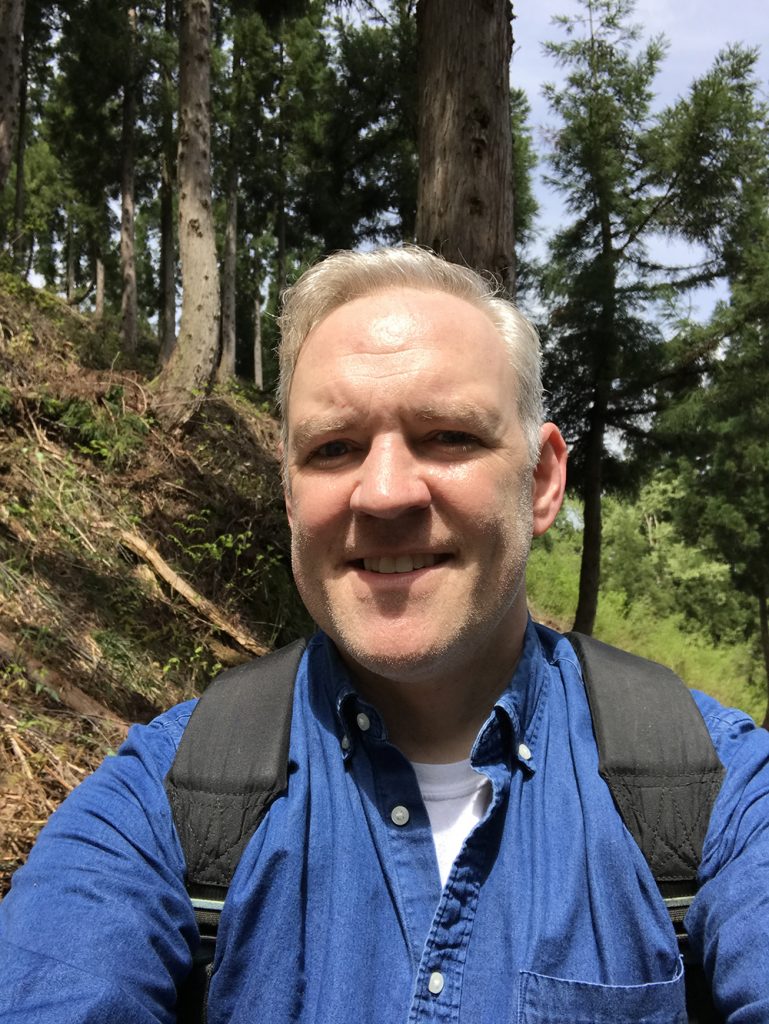
Getting Tired! Is the air thinner up here? ;-)
山菜採りの一日が終わった後、私はその収穫量に驚きました。
ぜんまいは調理され、来年まで保存されます。…でも、来年まで待てません!
山菜採りは新しい趣味になるかもしれません。
記 2016~2017年
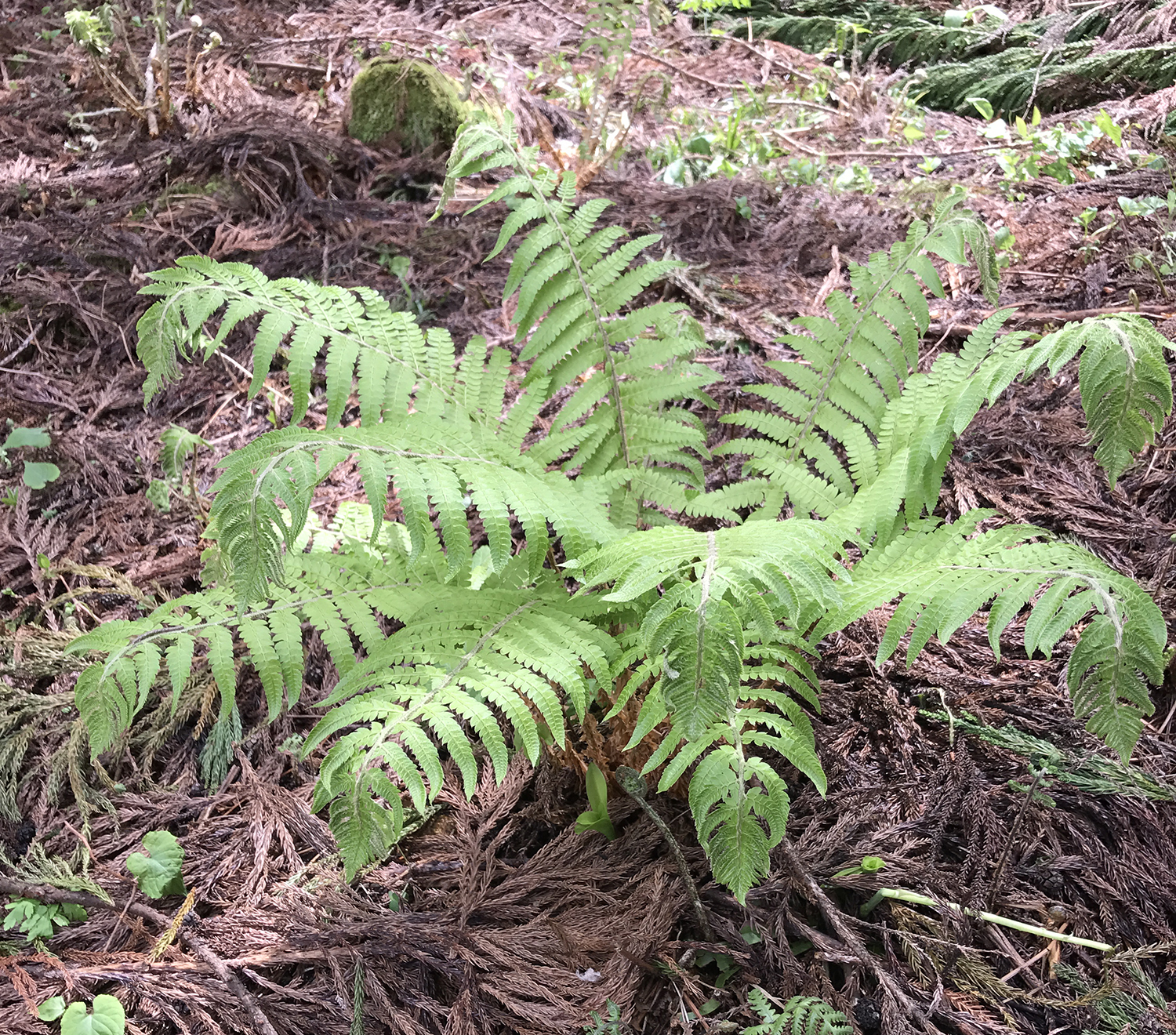
If you don’t pick the buds, Zenmai turns into a fern like this one.
Since I arrived in Niigata last year, I have been eating a lot of sansai (山菜) which means simply "mountain vegetables".
They are a staple food here and the product of foraging by hand in the mountainside forests.
In this snow bound and mountainous area, these vegetables are eaten soon after they are collected, but also preserved and enjoyed all year round.
Sansai are famous for having a bitter taste. Their natural bitterness is actually a defense mechanism against animals nibbling on them.
The locals here have developed a taste for the bitter greens and they are served in many ways,the most popular being flash fried as tempura, blanched and serve with a soy sauce and also preserved as pickles.
The taste is indeed bitter, but I've come to love sansai. Believe it or not, the bitterness is actually a perfect compliment to sake, too!
I was surprised when I received an invitation to go sansai picking myself.
A local guide heard about my love of Niigata mountain vegetables and offered to take me to his favorite spot for picking mountain vegetables.
My only instruction was to wear boots and gloves. As we were driving to the mountain,
my guide told me we would be picking only one kind of plant that day, zenmai (薇) known in English as cinnamon fern or by it's scientific name Osmunda Japonica.
I had never heard of this plant before, so I was wondering how I would recognize it in the wild.
When we arrived on the mountain, we began climbing up and within three minutes we saw our first zenmai.
I quickly learned that they were the first growth of a moisture and shade loving wild fern andthey look very much like an extra large fiddlehead fern covered in a kind of mossy spiderweb.
It doesn't sound appetizing, but I'm assured they are delicious. I was outfitted with an apron with a deep pocket and a backpack and away we went.
As we started to climb up my guide would expertly spot the zenmai from far away.
We would snap the stems about 2/3rds of the way down and I would collect the stems in my pouch.
There were also some guidelines on what not to pick. If the zenmai were too small, we left them alone to grow for next year.
I also learned that the zenmai are only edible when they are in the fiddlehead fern shape. If they had begun to openand spread their fern leaves, I was to leave them alone.
As we marched up the mountainside, the slope got gradually steeper and steeper.
When my apron's pouch was full of zenmai, I would wrap them in a cloth and load them into my backpack.
This foraging became a fun game and spotting the ferns on the mountainside became easier and easier.
After climbing up for 90 minutes, we decided to make our way back down. My backpack was loaded full of zenmai.
I learned that my guide usually hikes to the top of the mountain when foraging… that would have been 3 hours up and 3 hours back down!
Even though I was wiped out, I was just given the beginner's course! I'll need to do some training if I'm going to mountain climbing again.
When the day was over I was impressed with our haul. If you know what to look for the mountain can really provide bounty.
The zenmai that I collected will be cooked and preserved for eating next year – can't wait to try them! Think sansai foraging might be a brand new hobby!
- この記事をシェアする
-
